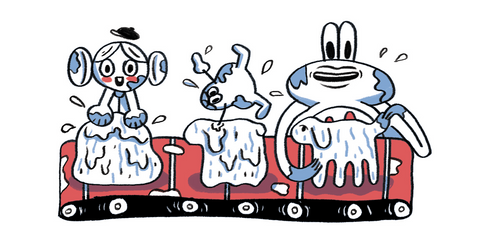Meetings rarely produce meaningful design work. And most, if not all, meetings are a waste of time.
So why do we have them?
It's thought that meetings act as a social-hierarchy calibrator. Helping maintain or progress people's position in the group's social pecking order.
This forms a cultural habit. Those who benefit most from these status games tend to be the ones who perpetuate 'meeting-itis'.
But when it comes to getting work done, meetings are interruptions. As such, their length must be limited - or avoided altogether.
If you must have meetings, Agile maestro Allen Holub suggests:
"Put at least 3 hours between all meetings. If you're having more meetings than that, you have a serious meeting-culture dysfunction that needs to be solved in a retro."
But what's more important? Talking about the work, or doing the work?
Not everything interaction has to be a meeting. It's okay to have a side-of-desk conversation if it helps move the work forward.
The Agile Manifesto promotes "individuals and interactions over processes and tools." Conversation is the epitome of that. In Jeff Gothelf's book Lean UX, he explains:
"By having conversations early and often, the team is aware of everyone's ideas and can get started on their own work earlier."
Gothelf goes on to say that the merit of these conversations builds bonds between team members. Those bonds create trust, which results in high quality, motivated teams.
Ad-hoc conversations are in stark contrast to the time-consuming nature of meetings. Being together creates a state of flow in the team. This can't happen with the stop-start nature of scheduled meetings.
Eradicating meetings is the essence of what Workshop Tactics was born from. And instead, replace arduous meetings with short productive workshops. After all, our tagline is 'ditch dull meetings, design better products'.
If you find your team is suffering from 'meeting-itis', you have two courses of action:
1. As Holub recommends, conduct a Retrospective to find out why you are having so many meetings.
2. Turn your chaotic free-for-all meetings into a structured, productive discussion.








